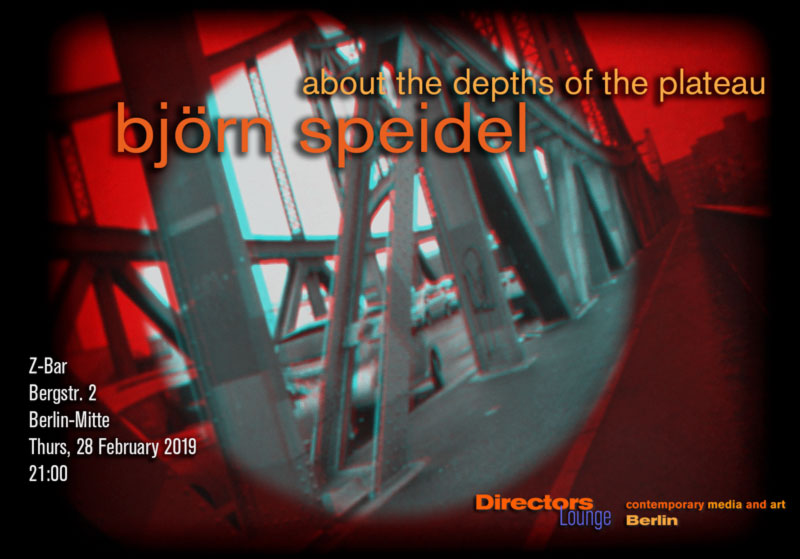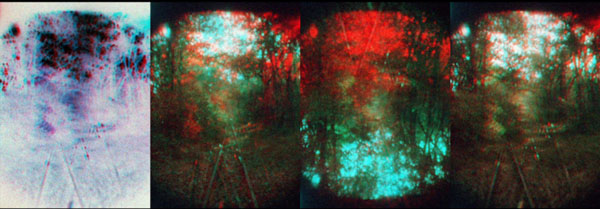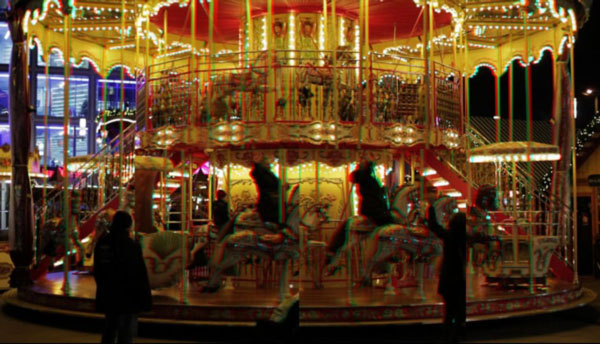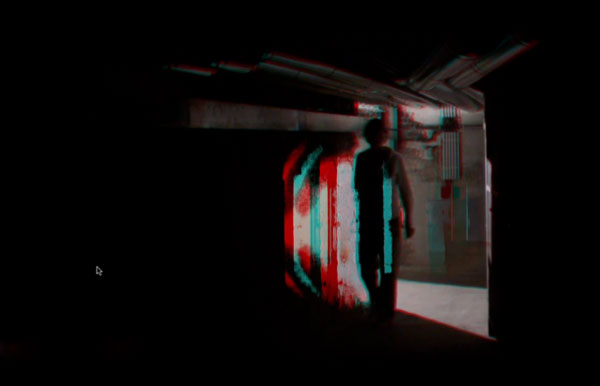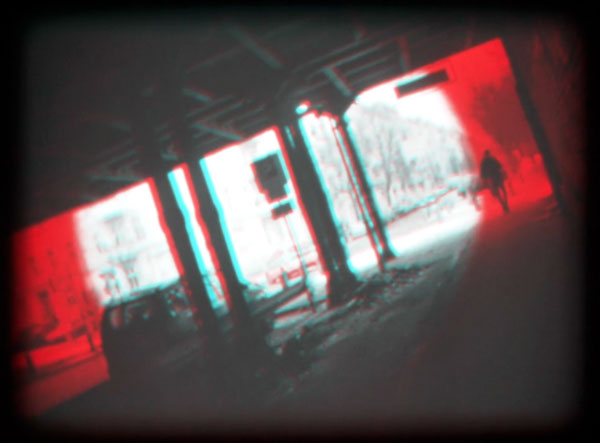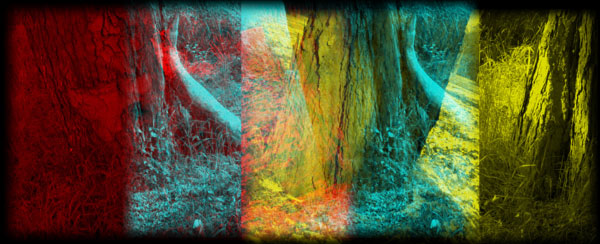 |
directors lounge monthly screenings
Björn Speidel
About the Depths of the Plateau
Thursday, 28 February 2019
21:00
Z-Bar
Bergstraße 2
10115 Berlin-Mitte
With his experimental films, the Berlin based filmmaker Björn Speidel explores the relationship between image and imaging surface. For several years, he has investigated the image's depth by the use of stereo 3D.
Lately, 3D cinema has become a new hype in the mainstream. The new trend is related to reaching for a more immersive cinema, competing with computer games. Björn Speidel takes a different stance by considering stereoscopic pictures as a tableau with depth. This opens a different approach to the concept of three-dimensional images. Instead of just representing an image of the world, a single picture may unfold a whole world of its own. Within only few image "incidents" virtual sensations start to occur that could not exists outside the image - a fragile utopia.
There are different ways to produce a 3-D illusion, or depth. The basic rules were already discovered in the Renaissance and described by Leonardo da Vinci: line perspective, color perspective, perspective by contrast, size, over-lapping, and sfumato (different clearness by the diffraction caused by the air). These were used in painting and in photography ever since, in order to create "realistic images". In film, there is another possibility to create the illusion of depth without the use of stereoscopic vision: as soon as the camera moves, the parallaxes of movement (closer objects seem to move faster than objects in the background) creates the illusion of depth in our cognition. On the other hand, when enhanced by 3-D Technologies (split stereo vision using the stereo parallaxes) and even with full surround sound technologies, realistic images still create a frustration in the viewer, according to Björn Speidel. The expected full immersion still seems to be flauty, something still appears artificial, or disturbing. This may be the reason, why the latest revival of stereoscopic cinema with newest technologies already seems to fade. The biggest wave of stereoscopic vision in photography, by the way, happened by the end of the 19th century, when there were more stereo photographs on the market than single photographs. The technology used at that time was the hand-held stereo viewer, allowing to see the two images on separate eyes. In our days, the big cinemas who had bought the new promising digital technologies often stopped using them. It never arrived in "Art House Cinema" either, despite the efforts of Wim Wenders who made 4 stereoscopic films. Thus, the production of 3-D movies is mostly limited to sensational, Vaudeville-like movies.
Björn Speidel, on the other hand, took the occasion of his frustration to a different objective for his artistic research: if there already exists an illusion of three dimensions in one-eyed cinema, "why not trying to use the stereoscopy for an additional dimension in film". Speidel completed his studies in experimental film and media arts at UdK Berlin, after a first diploma in Visual Communication. "Something much more appealing than design studies." he told me. The more recent films of Heinz Emigholz, with whom he studied, became a strong influence, but even more so the viewing experience of films by Ken Jacobs. Until recently, Jacobs used to come to Berlin on a regular base, showing his stereoscopic films using a huge apparatus of two synchronized 16mm projectors connected with an outside rotary disc shutter. Many of his flickering films are using old movies from the end of 19th or beginning 20th century and they explore the possibilities of enhanced 3-dimensional illusion without using special viewing glasses. Björn however uses those glasses, as he is interested, to control the separate vision for both eyes, and he shoots his own footage. For this screening, he will mostly use glasses with red and cyan filters. His research goes back to ideas of a faction of the American avantgarde cinema, often reviewed as structural cinema, like Michael Snow (Candian) or Len Lye (New Zealand-born). Austrian filmmaker Peter Kubelka once defined cinema as a result from the differences between one and another still image (instead of "moving image"). The expanded cinema definition of Björn Speidel may thus be seen as resulting from the differences between the vision of the right and the left eye.
The films of Björn Speidel often combine several stereo 3D technologies. "Dead End" (2016) uses a stereo attachment on a 16mm wind-up camera, resulting in two parallel images on film, which then were digitally combined in different ways. What we see are 4 parallel images playing as one video track. Walking through the woods along a derelict train track, gives Björn the opportunity to paste the images in more ways than just the traditional stereoscopic combination, as the images are very similar. The 4 images seem to show the same image repeatedly, but the repetition is not gaining importance. It is more like the noise of what is actually happening. The single images appear to have different depth, sometimes appear only on one side of the vision, in black and white, or in reverse. Like on an extended walk through the woods, the destination becomes irrelevant in relation to the current perceptions of small details, changes of light, and associations of the mind that come and go. The topic of woods, or of trees reappear in his films as a metaphor as well as a structure of repetition and noise. The German saying of not seeing the woods because of all the trees may well describe the repetitive background noise created by his individual works. The motives of walking in the woods also (re)appear as a combination of chance and structural montage.
Zwielicht (Twilight) 2017 contains images of Berlin streets during winter and images of the sun. The images of Berlin were not shot with a stereo camera, but with two separate takes from slightly different positions, left and right, thus creating a stereo parallaxes, when being put together. However, as they were shot at slightly different times, moving objects such as cars, bicycles or foot passengers only appear on one side of the stereo vision. Björn extends this separation between the left and the right side further by masking parts of the image with a round mask, however on only one side, or even showing a completely different image on the left or on the right eye sight (by color separation for left and ride side). By parallel montage, the stereoscopic image of solar spots on the surface of the sun appears from time to time during the film. Here also, different images iterate for the right and the left eye, positive and negative images, with less and more details and fluctuate with the "conventional" 3-D images. The montage seems to metaphorically denote a fundamentally fragmented world of every day life split into disjunctive sections.
In "Wanderlust Iteration #1" the image is again divided in two parts. It is a stereoscopic recording of several trees, shot exactly from the same point of view during winter and summer time. The tree always in the center, it seems that it and its surrounding are rotating for the whole time. However, this is just a virtual illusion (discovered by Ken Jacobs), the camera did not rotate around the trees. Instead, the artist shows the stereo images one after the other followed by their negatives. Because of the stereo parallaxes of the single images, they seem to move, however only one frame. As the pictures are played on a slower frame rate, and the next tree images are again played the same way, the rotation seems to be endless. At random order, Speidel now combines in the film the left or right stereo image with its stereo counterpart, or its counterpart from the other season, or no image at all. The result is a flickering mesmerizing meditation about trees that turn into roundabouts.
ROTARIO (2016) is made from the recording of a real carrousel, a remake of a historical merry-go-around it seems. On the occasion of this moving object, the artist uses another virtual illusion: sideways moving images change their position similarly to the shift of stereo parallaxes. Thus the movement can be used for a 3-D illusion, if the left or the right eye receive the information with a delay in relation to the other image. It works perfectly with the carrousel. However, after a short while into the film, it becomes apparent that Björn invisibly split the image in 8 square parts that play separately. In this way, the artists adds more irritations over time. With this 3-D rendering method, people moving in the direction of the rotating carrousel seem to be close to the eye, but people walking in opposite direction become flattened (they should appear behind the carrousel, but the perspective rule of overlapping does not allow the brain to process that). In addition, if in one part of the split image, the carrousel stays still, it appears flat in comparison with the other moving parts. People enter and disappear from one split square to another. And, after half of the length of the film, Björn slowly replaces the 8 parts by their mirror image, until the whole merry-go-around moves in the opposite direction.
Even though the topic of the funfair attraction has been seen many times in film, the ROTARIO seems to be special and another perfect metaphor for Björn Speidel's work. Even though it seems childish first, I may greatly enjoy a ride on a horse of a (real) carrousel, if I let myself go with the flow. In opposition to more spectacular amusement park attractions such as a roller coaster, the amusement does not play with the fear of death or near accident. Riding the wooden horse and going around gives me the opportunity to be in a safe place while my visual perception, sense of balance and sense of movement receive a wonderful mix of impressions. I am able to look at details, view the background move around at speed, or let my memories combine associations to my current perceptions. All of which is very similar to the sensations I receive watching Björn Speidel's films. It is also similar to the different "depths" that I can actively sense in his the grids of his tableau: I may try to register, when spatial illusion occurs, or when it breaks down. I can recognize when my left eye sees something different to my right eye and visually understand why that irritation happens. On the other hand, I may also let myself go and follow the different sometimes irritating multiple perceptions like a new mantra. One might say, I can do the same with any (good) film, however it explains, why the moving "tableaus" of Speidel can be quite entertaining and very enjoyable while "nothing happens" on the narrative level.
Finally, (experimental) filmmaking is always related to the used apparatus.Thus Björn Speidel is exploring a diversity means of analogue film, analogue video and digital media. Some were shot on film with its specific quality of multiple exposure, for example "Dead End", but collaged by digital means, others were shot digitally and are being presented with two 16mm projectors like "Tree Again". We are thus looking forward to this exciting multi media and multi dimensional screening.
The screening will include the first presentation of the “Video-Harp" as a world premiere.
The artist will present the films personally, and will be available for Q&A after the screening. Curated by Klaus W. Eisenlohr
Playlist:
- inHeim, HD stereo3D, colour/anaglyphic, sound, 15min, 2008
- Dead End, rewind reversal, 4k stereo3D, colour/anaglyphic, sound, 11 min, 2016
- ROTARIO, 2k stereo3D, colour/anaglyphic, sound, 9min, 2016
- Wanderlust #1, 2k stereo3D, bw/anaglyphic, sound, 9min, 2018
- Zwielicht, 16mm double projection, stereo3D, bw/anaglyphic, silent, 5min, 2017
- Tree Again (Wanderlust #2), 16mm projecting-performance, Chroma Depth, live-sound, ca. 8Min, 2018
- Video-Scope (playing the Video-Harp), analog-video projecting-performance, Chroma Depth, live-sound, 2019
Artist Link:
https://www.bjoernspeidel.de/
Links:
Z-Bar - http://www.z-bar.de/
Directors Lounge - http://directorslounge.net
 Back Back
|
 |
